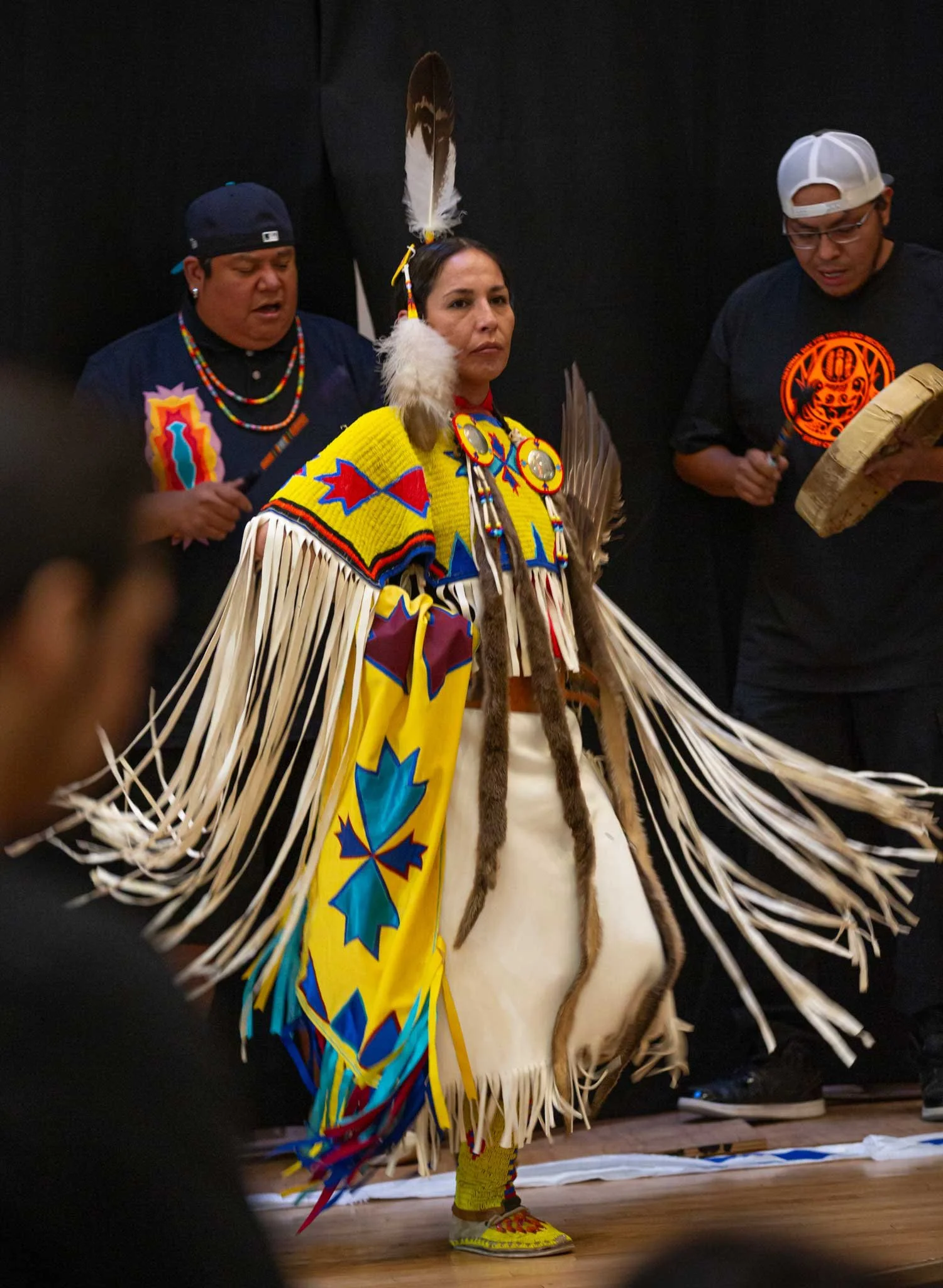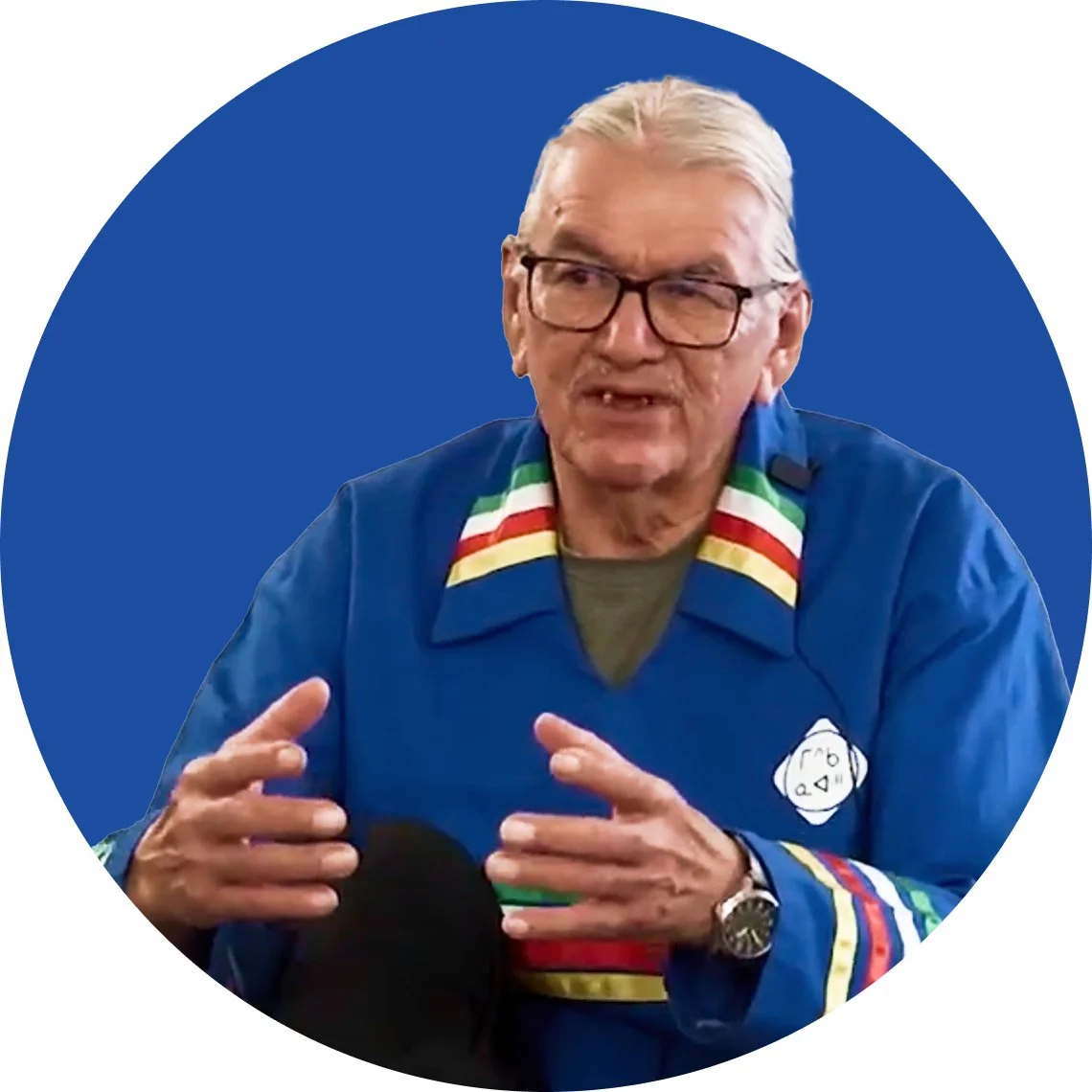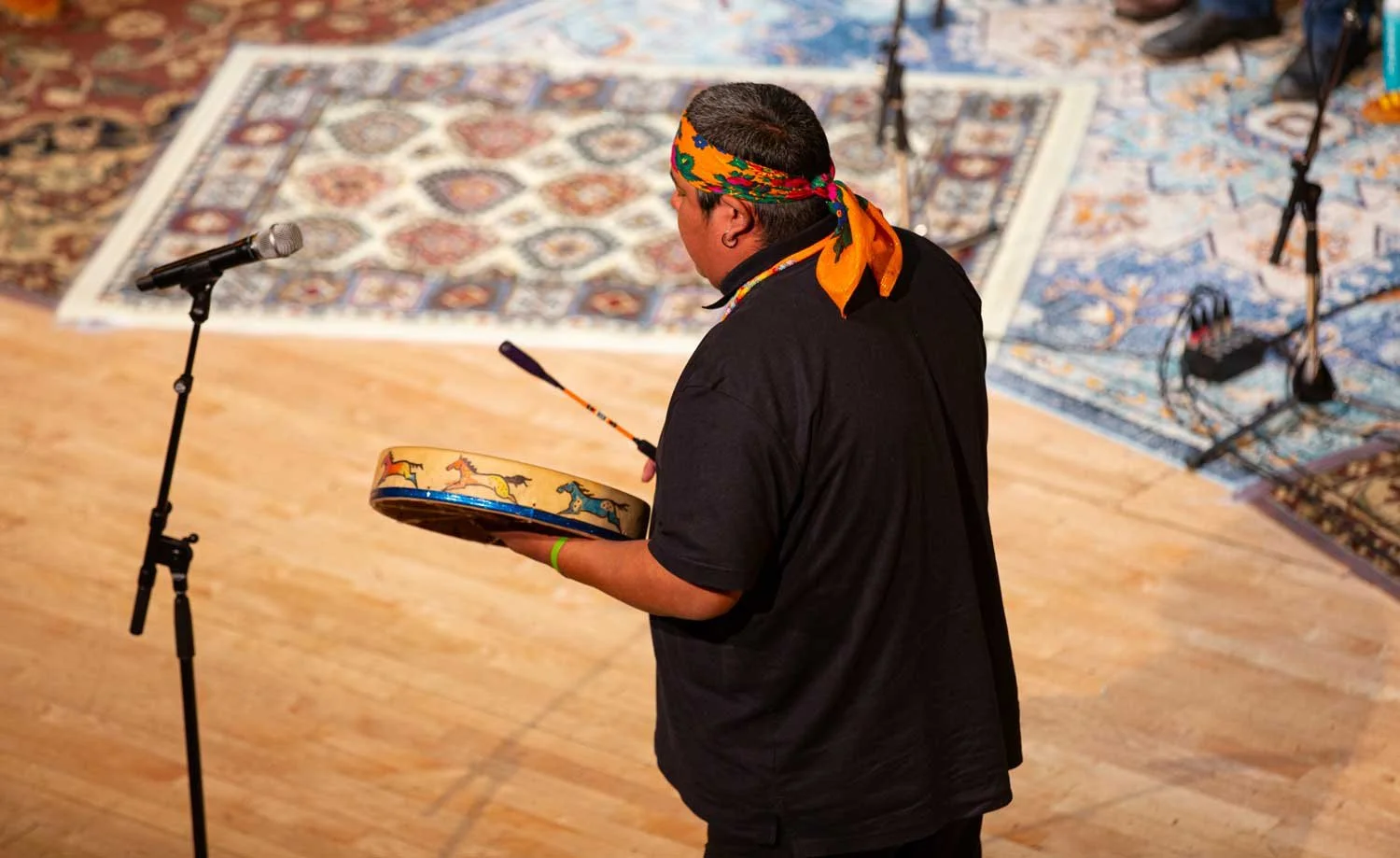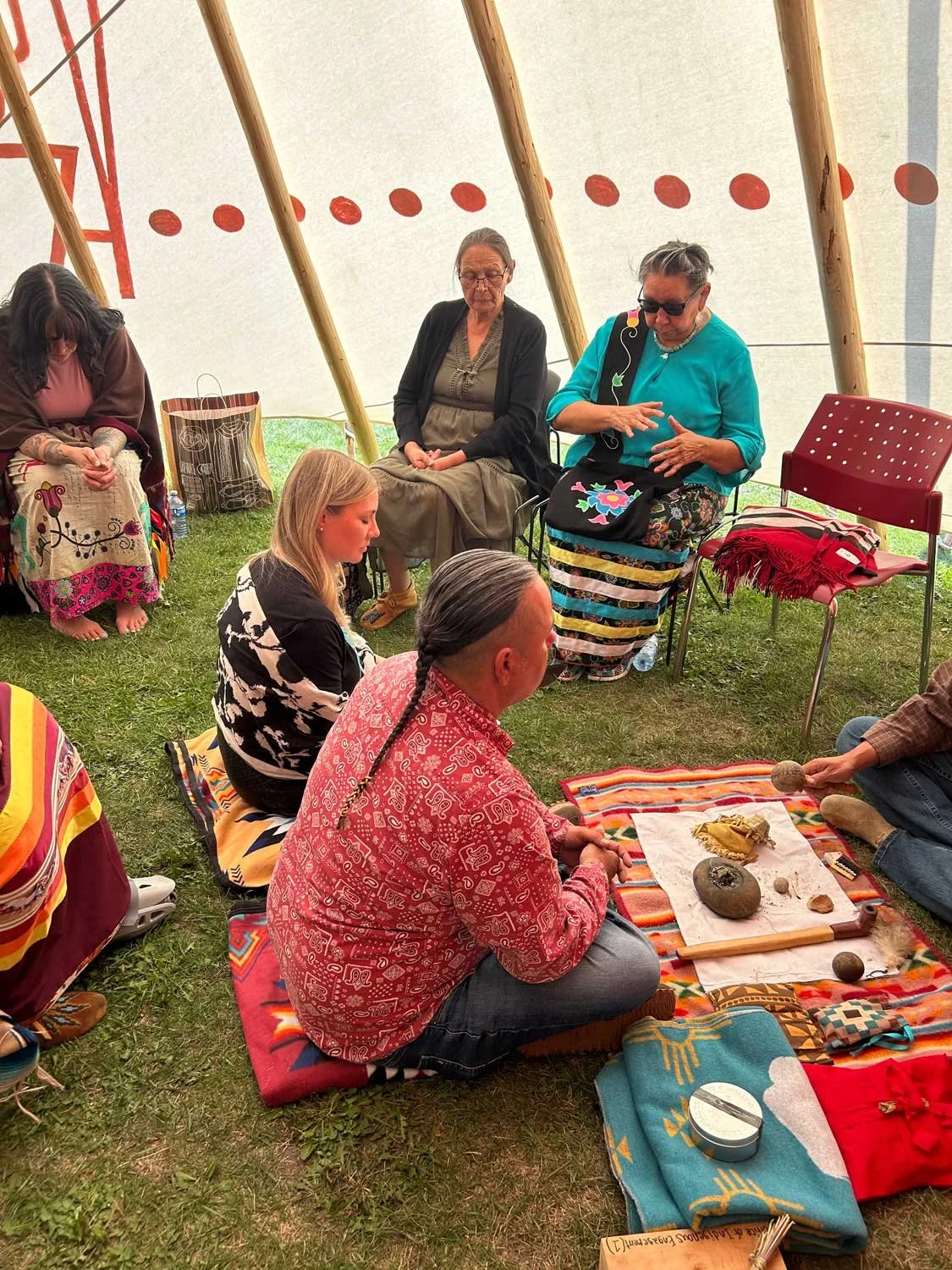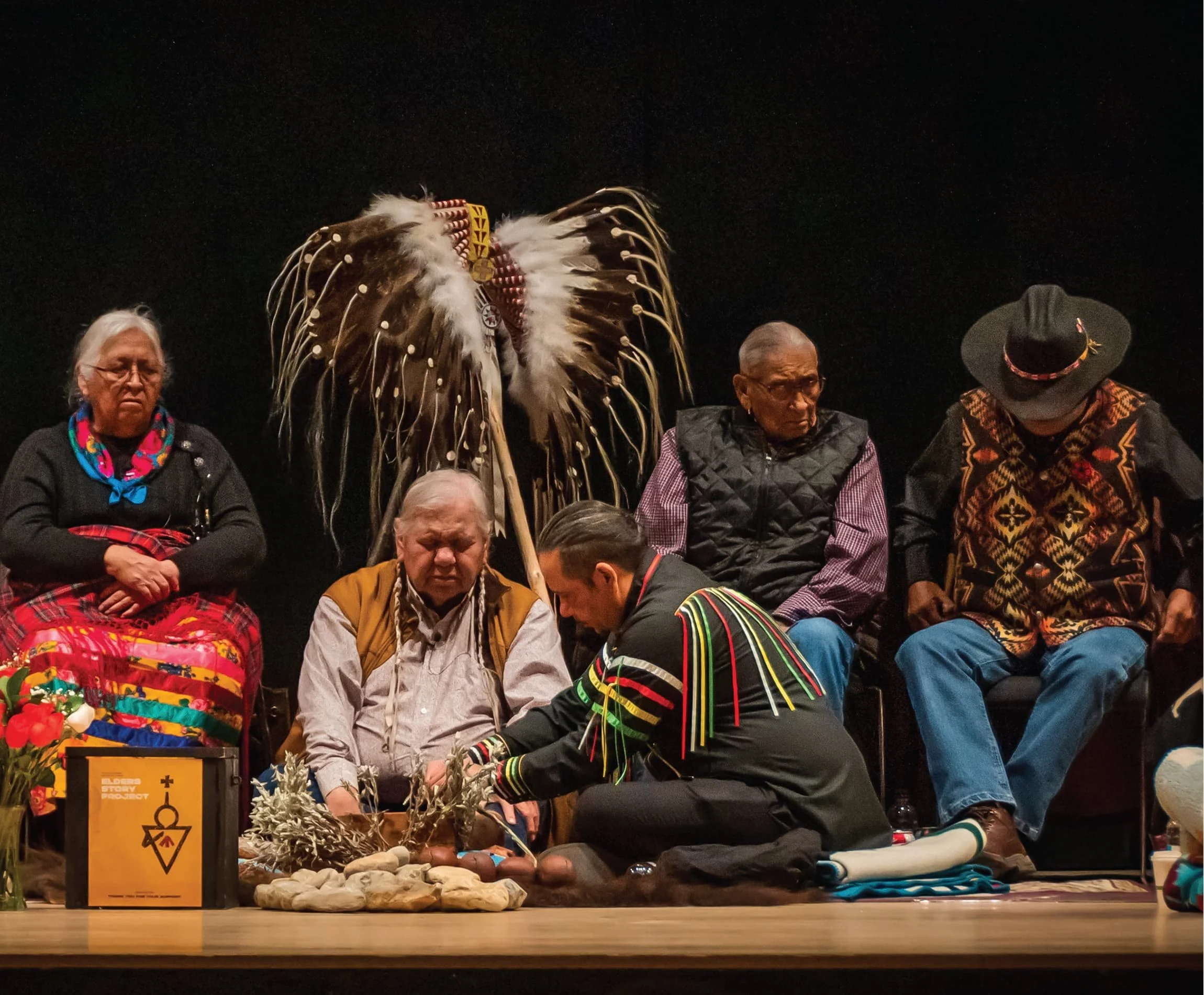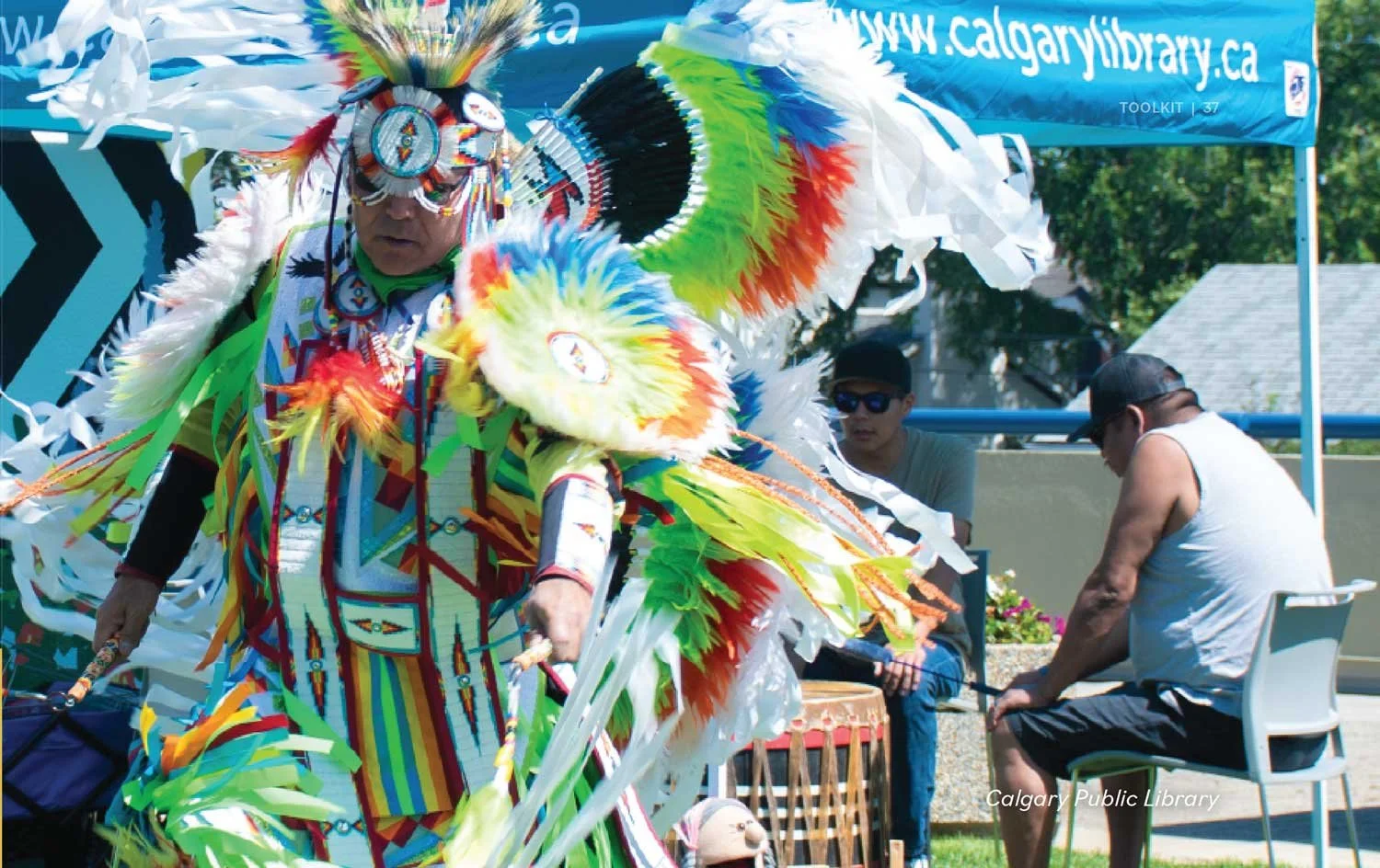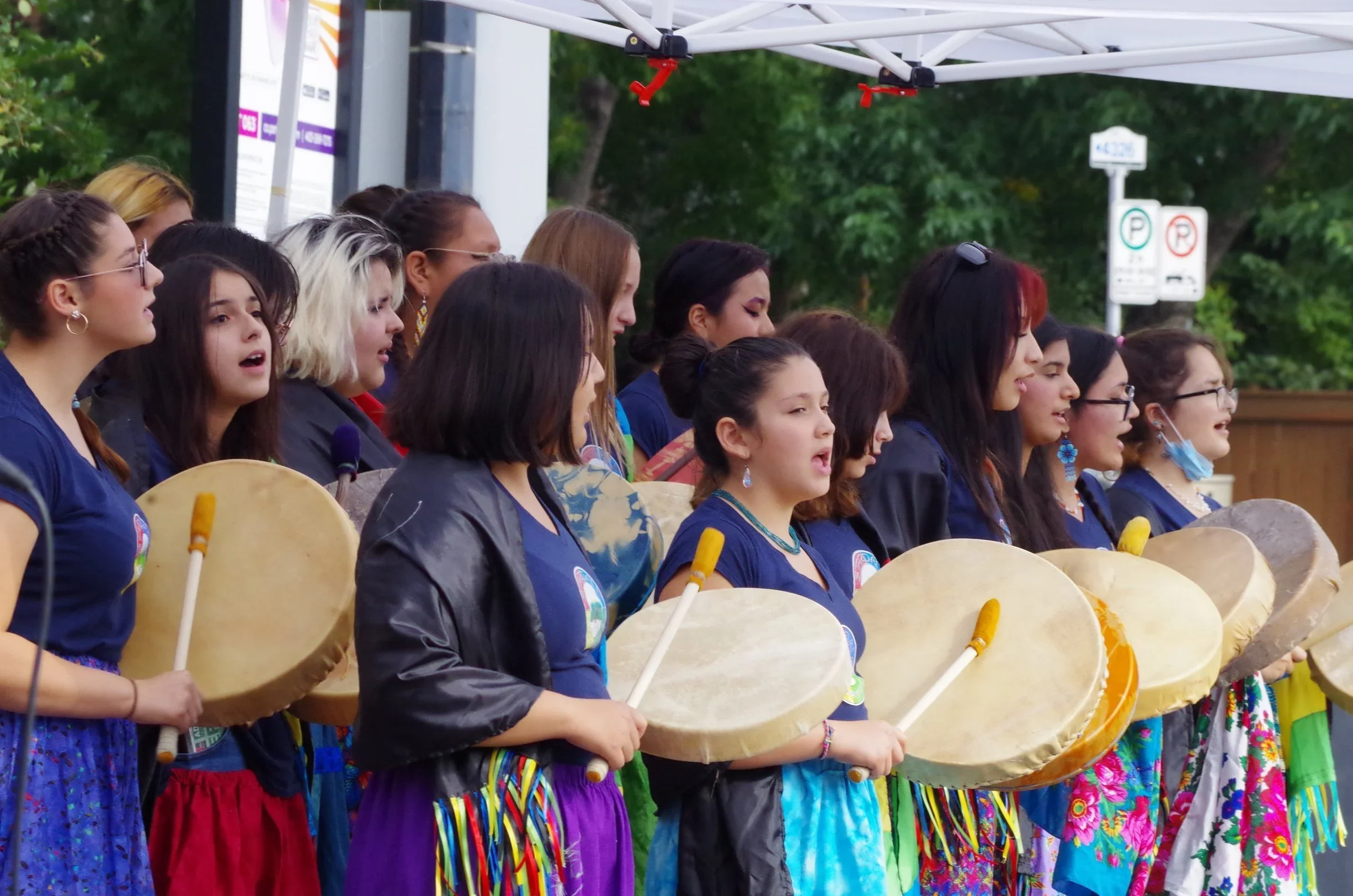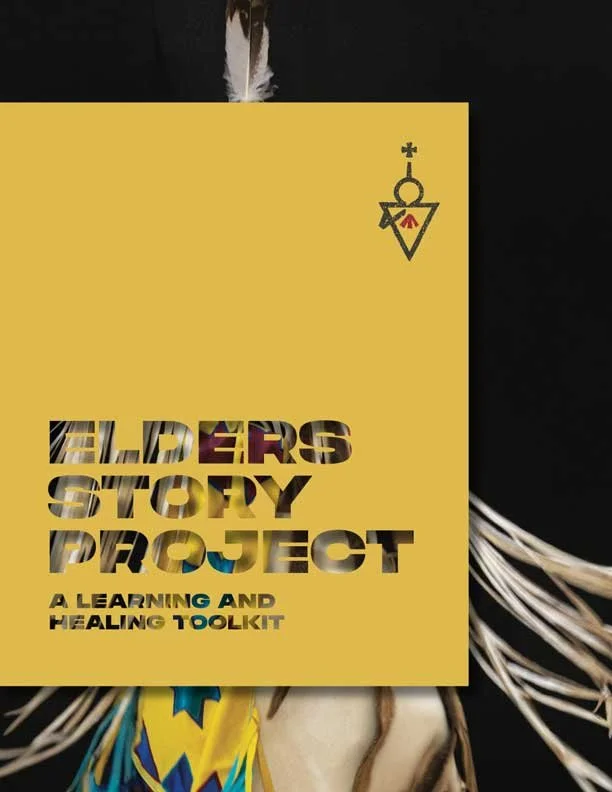Ceremony & Healing
Indigenous culture, connection, and wellness.
Ceremonies and protocols differ from Nation to Nation and from one person to the next within their own Nation or Band. For many Indigenous Peoples, connecting or reconnecting to culture and ceremony is healing. Indigenous Peoples may participate in traditional healing and wellness through ceremony (for example, sweats or healing circles), plant-based medicines, art, song and/or dance.
At a time in my young life, I wanted the lodge, I wanted ceremony, because then later on in my life I got a Pipe, I got songs, I got rights and privileges to do lodge, rights and privileges to help people. And today we have what we do here today, this gathering we have here today. We have our own way of healing our own People. Not only our own people, but also Western People.”
- Pat Daigneault
Elders Knowledge Circle: Video seriesPat Daigneault
The Importance of Ceremony
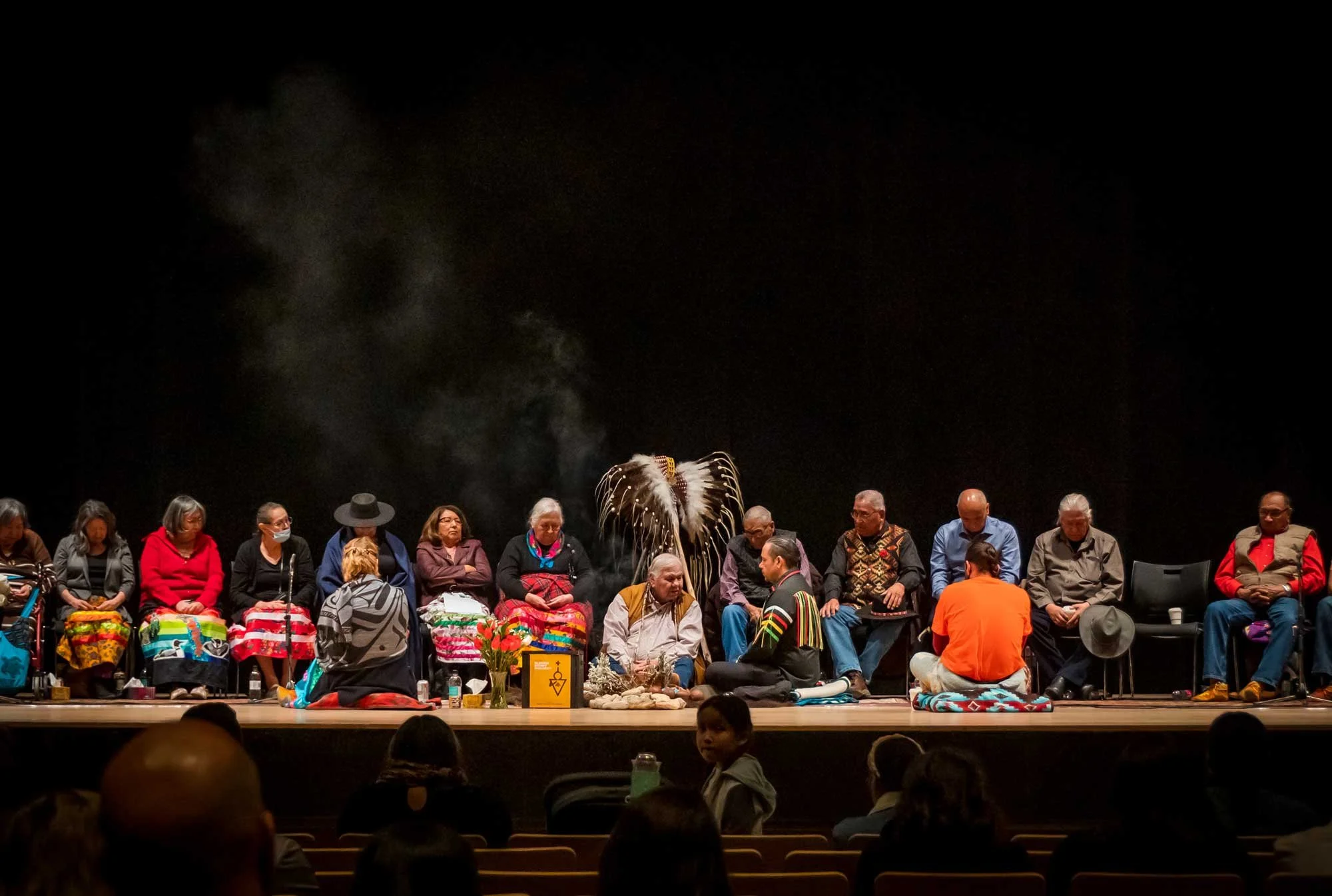
Prayer and Smudge
Ceremony and prayer can be healing. It is respectful to ask a Grandparent to open and close a meeting, workshop, event or ceremony with a prayer.
Smudging changes the energy of a space and most often takes place at the beginning of a gathering, creating a culturally safe space. Using Smudge for medicinal purposes and spiritual ceremonies is a frequent practice that involves prayer to invite the Creator into spaces for further guidance into the discussion and work for the people involved/impacted. The smoke from burning sacred medicines like sweetgrass, cedar, sage, tobacco or fungi in small amounts has cleansing and healing powers and carries people’s prayers to the Creator.
Pipe Ceremony
The Pipe is very sacred to First Nations people. In the past, a Pipe Ceremony was used to open negotiations between different Nations where participants would be truthful, respectful and abide by the decisions and agreements that were made during the meeting time (to seal a Covenant or Treaty). Pipe Ceremonies continue in the same way today, where two parties agree to make a commitment to work together in a good way. Tobacco that has been blessed through prayer is normally used for the ceremony. Men, women, and children may be asked to enter and join the Circle for a Pipe Ceremony in a specific way. In a Pipe Ceremony, the Pipe is passed to participants in the circle for them to either smoke or touch it.
POW WOW AND ROUND DANCE
A Pow Wow is a gathering where First Nations Peoples come together to dance, sing, feast, visit with old friends, and make new ones. Pow Wows often occur during the summer months, and the dancing and drumming to Mother Earth’s heartbeat are a form of healing. There are different types of dances, such as traditional, fancy, grass, jingle, and more. The outfits worn by dancers reflect this and are known as regalia.
There are different kinds of Pow Wows; each one will have unique characteristics and traditions related to the area. The most common types are traditional Pow Wows, and competition Pow Wows: competition Pow Wows offer prizes for those dancing and drumming; traditional Pow Wows focus more on everyone being able to participate in and experience the Pow Wow.
Each Pow Wow will have a schedule which often includes a Grand Entry, dance competitions and specials, and Closing Ceremonies. Listen to the emcee as they talk about the Dances being performed, the origins of the songs, when you may be asked to stand, and more. When the emcee announces an Intertribal Song, that means everybody can join in! (Indigenous and non-Indigenous Peoples).
A Round Dance is a Traditional Gathering of numerous Nations open to everybody in a community and is intended for healing, remembrance, and bringing people together to celebrate life. Round Dances often take place in the winter months and can last all night!
At a Pow Wow or Round Dance, there may be times when it is not appropriate to take photos. It is always best to ask permission before taking photos. Please do not touch a dancers regalia.
SWEAT LODGE
A Sweat-Lodge Ceremony is a healing and purification ceremony, performed by itself or as a prelude to other ceremonies such as the Sun Dance or Circle Camp, using the natural elements of fire, earth, air, and water to heal and cleanse. Individuals attending a sweat lodge may provide the person performing the sweat Tobacco and often broad cloth (it is best to ask the host about appropriate protocol). Some Sweat Lodge Ceremonies are restricted to men, women, children or members of certain clans; at other times, the lodge is open to all. A lodge is formed in the shape of a dome, to represent the womb of Mother Earth. A pit is in the centre of a lodge, where specially chosen rocks are heated. Participants sit in a circle around the centre pit and a fire-tender passes in heated rocks, which are placed in the pit. The host prays in a sweat and may sing, use rattles, play a drum, or smoke a Sacred Pipe, inviting healing spirits into the lodge. After the ceremony is over, everybody may contribute to and join in a traditional feast, and gifts are provided to the person who performed the sweat prior to the ceremony. Non-Indigenous peoples sometimes also participate and benefit from Sweat Lodge Ceremonies. Not all Ceremonies are always open to everyone. This is not a place for curiosity.
SUN DANCE/CIRCLE CAMP/AKOOKAASIN
Traditionally, Sun Dances or Circle Camps are held in late spring or early summer. These are ceremonies that happen in the summer where individuals make personal sacrifices on behalf of their families or community, and together they pray for healing. You must be invited by someone from the community to attend because there are many protocols that must be followed. They are your guide and will teach you how to be in those circles.
Disclaimer
Do your research and ask questions if you are unsure. Ceremony is a powerful place and is meant for healing. Oral protection and validation are important, and the Elders Knowledge Circle Society is a place you can connect to.Stardale Women’s Group WOMEN AND
CEREMONY
Moon Time refers to a sacred time when a woman is on her Holy Time. Through this cycle, women feel the effects of the Grandmother Moon, similar to how the moon affects ocean tides. Women are respected for their ability to create life and Moon Time is a ceremony to connect with Creator. Because women are considered powerfully connected to Creator during their Moon Time, different Grandparents and Nations may request women not participate in certain ceremonies or use certain medicines. If you are not sure about protocol at a ceremony, pull a female Grandparent or the lead Grandparent aside and let them know you are on your Moon Time and they may guide you with what you may need to do.
Ribbon Skirts are often worn in ceremony or at special events. Traditionally, ribbon skirts are ankle-length, connecting you to the land or Mother Earth. Different color ribbons generally mean something special to the wearer, may be unique to their own teachings, or to each Nation. A ribbon skirt is an expression of womanhood and strength and a symbol of reclaiming identity. Regardless of how you may identify (Indigenous or non-Indigenous), if you are participating in or witnessing a ceremony, you may be encouraged to wear a ribbon skirt or a long skirt.

Land-based healing
Land-based activities such as hunting/trapping/harvesting/ fishing, education, ceremony, gathering traditional medicines, and recreation (walking, hiking, camping) recognize that cultural identity is interwoven with and connected to land and water. Connecting with the land increases positive mental health and wellness outcomes.
Words hold knowledge
LANGUAGE
Indigenous Peoples of all ages are re-learning their language. Learning or knowing your language grounds you, impacts your worldview, contributes to healing and your sense of belonging and identity, and helps you connect with Grandparents and Knowledge Keepers in your communities to maintain your culture.
“Language is the foundation of a culture. For Indigenous oral societies, words hold knowledge amassed for millennia. A language also holds the stories, songs, dances, protocols, family histories and connections. Languages also often hold the community’s customary laws that were eroded by the policies of the Indian Act.
As many communities move towards a return to self-government, this loss of laws and systems of governance means some communities don’t have that knowledge to draw upon. When a language dies so does the link to the cultural and historical past. Without that crucial connection to their linguistic and cultural history, people lose their sense of identity and belonging.
Indigenous Peoples have been observing and talking about the environment since time immemorial. All of that knowledge, held in the language, is an invaluable source of information about the history of the natural environment, climate, plants, and animals. It is an irretrievable body of knowledge. Science, medicine, governments and resource planners all rely in part on Indigenous traditional knowledge and are all impacted when that irreplaceable storehouse of traditional environmental knowledge is gone. Each language that dies equals the loss of a cultural treasure.”
Learn more at:
Ceremony and Identity Video from Native Counseling Services of Alberta:
https://voicesoftheland.org/digital-heritage/ceremony-and-identity
Round Dance 101: What to Know Before Your First Round Dance:
https://www.youtube.com/watch?v=626MhRl6aFQ
Why Is It Important to Protect & Revitalize Indigenous Languages?
https://www.ictinc.ca/blog/why-is-it-impor ant-to-protect-revitalize-indigenous-languages

